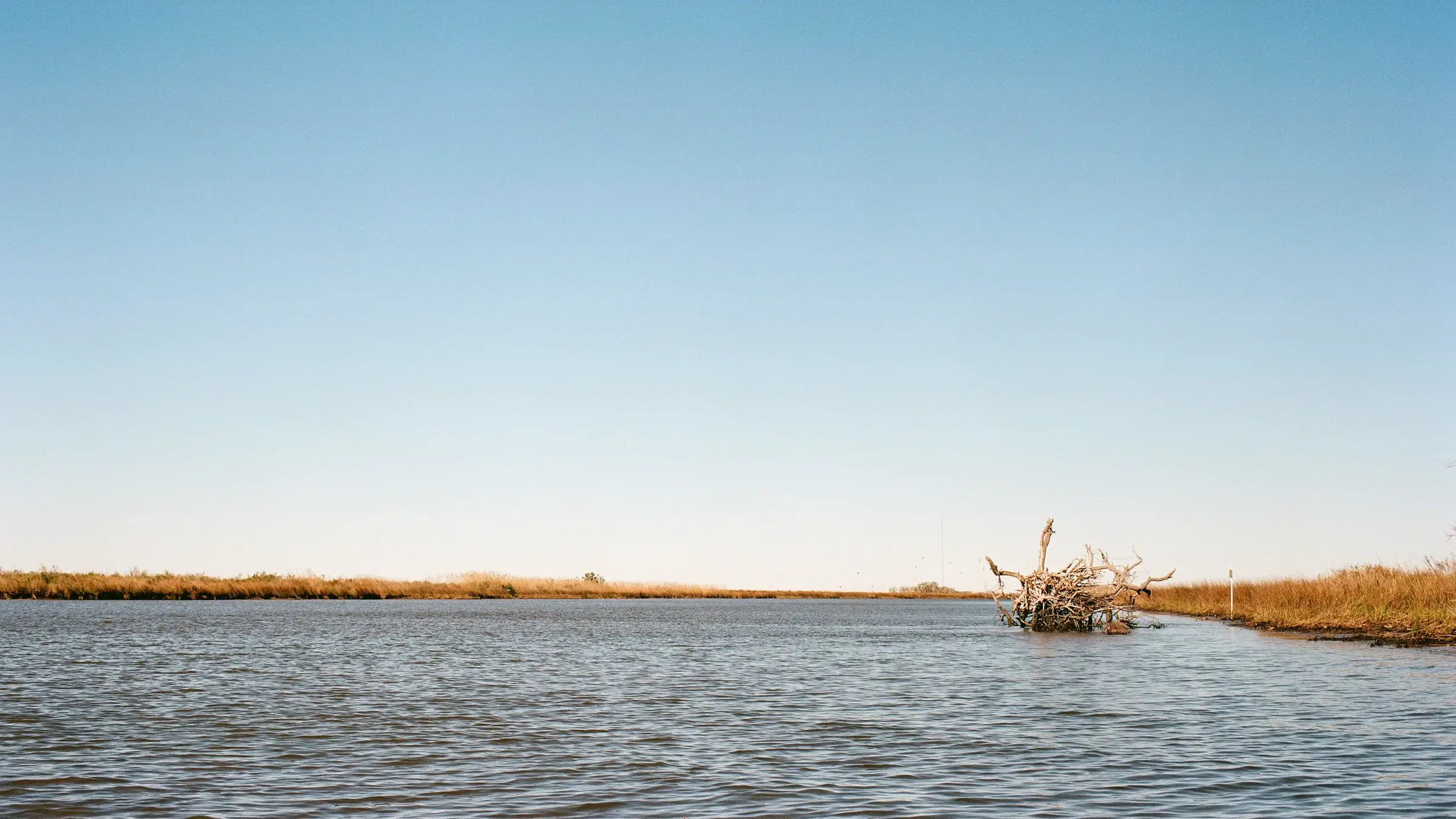
Louisiana's indigenous tribes have been protecting the coast for generations — and they’re still fighting to have their voices heard
ROSINA PHILIPPE EXPERTLY steers a small metal boat through the brackish bayou. It’s a chilly February afternoon in Louisiana, and Philippe, an elder of the Atakapa-Ishak/Chawasha Tribe, is bundled up in a camouflage hoodie. She’s lived here in the Grand Bayou Village her whole life, and she’s seen how these marshy waters, which flow out from the Mississippi River Delta, have changed.

As a nonprofit journalism organization, we depend on your support to fund our nationwide Connected Coastlines climate reporting. Donate any amount today to become a Pulitzer Center Champion and receive exclusive benefits!
This river, which her tribe uses as a road, used to be more narrow. And the homes that line the bayou used to sit on more land. Many of them had huge screened-in porches where families gathered for meals. But each year, the water inches closer, swallowing the village.
“We’ve been here from the beginning, but we’re still here,” she says, “in spite of the challenges, in spite of the changes newcomers have made to the environment that we depend on for our livelihoods.”
Today, modest houses that are only accessible by water balance on wooden pilings, and docks jut out in front, stacked with crab traps and enormous green wharf nets used to catch shrimp. Coastal indigenous communities in Louisiana practice subsistence living, meaning they try to only take what they need, growing crops and harvesting shrimp, oysters, redfish, and crabs to eat or sell.
The Atakapa-Ishak/Chawasha Tribe has lived on this land for thousands of years, just above the mouth of the Mississippi River, which fans out like a bird’s foot where it meets the Gulf of Mexico. As sea levels rise and hurricanes intensify, washing away barrier islands and trees, it makes wind damage, storm surge, and flooding a greater threat. Decades of oil-and-gas drilling plus the devastating 2010 Deepwater Horizon oil spill, the largest marine oil spill in history, wreaked additional havoc on the coast, killing off plants and wildlife. Hurricane Ida in 2021 destroyed the state, and the coastal tribes are still struggling to recover from the damage. All together, these elements have worked in a destructive synergy, causing Louisiana to lose, on average, a football field of land every hour since 1932, as wetlands become open water. For the tribes that have lived here for generations, every shift in the shoreline is deeply felt. Each time, though, they’ve adapted.
But now, another huge change is coming to these fragile wisps of land. This year the state begins construction on the largest coastal restoration project in the country — one that will drastically redistribute water flow through this area. The $2.2 billion Mid-Barataria Sediment Diversion, primarily paid for by money BP paid the state to recover from the Deepwater spill and run by the state’s Coastal Protection and Restoration Authority, will cut a hole in a levee, reconnecting the Mississippi River to marshes south of the greater New Orleans metro area. A series of gates that look like a spillway will control how much water flows through. It’s designed to mimic how the river flows through the wetlands and deposits sediment, building land while providing natural flood protection. Models estimate it could create as much as 27 square miles of wetlands by 2070.
Depending on who you ask, it’s Louisiana’s biggest chance at fighting land loss or it’s a massive disruption to the delicate balance that allows coastal communities to live and work here.
Critics say the project will have devastating ecological impacts in the short term, threatening oyster beds and wildlife that live in the now salty marshes. This disrupts the livelihoods of people who harvest shrimp and fish in these waters, forcing them to move to other areas to gather food, adding additional fuel and labor costs. The added water flow could also lead to more flooding in areas like Grand Bayou Village. Bren Haase, the CPRA executive director in charge of the project, says the state’s devastating coastal erosion will bring negative impacts to the area regardless, and a bold solution is necessary to “hit the reset button.” But, he admits, “it will change things” more quickly for people living and working on the coast.
People like Philippe and the tribes who depend on this ecosystem.
As a dark-gray dolphin’s fin flashes near the boat, she talks about a recent study that predicts the majority of the local dolphin population will be decimated once the state begins construction. (Haase says there are mitigation efforts in place to try to reduce ecological damage.) The indigenous community believes that all water is connected, all of Mother Nature is a cycle, and such sudden, massive changes are dangerous, especially when the benefits won’t be seen for years. Many people in the coastal tribes think the enormous sediment diversion is too aggressive, too robust in scale, and too much of a gamble given the unpredictable variables that could come into play over the next 50 years. But it’s too late — that plan is already in motion. So they’re focusing on securing additional funding for complementary projects, smaller-scale land-building changes that will have immediate results to protect their land — like canal backfilling, ridge and marsh restoration, and more work that this community has been specifically championing for decades.
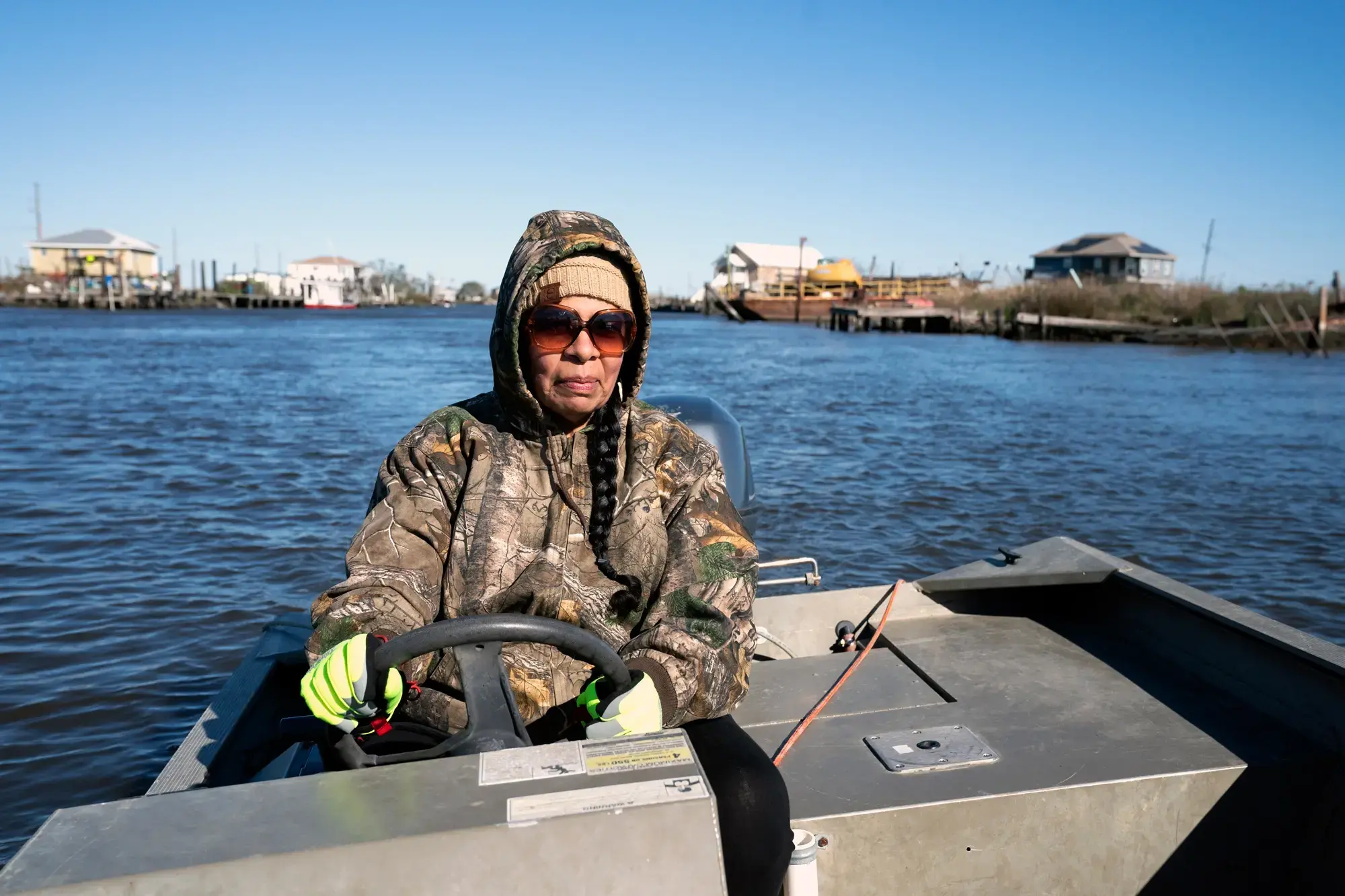
“The conversations about who gets -protected and who doesn’t often inherently privileges higher-value assets,” says disaster-justice expert Alessandra Jerolleman, who has worked with the coastal indigenous tribes for 20 years, helping them get their traditional ecological knowledge respected by scientists and politicians. She points out that roads with more traffic and communities that have a greater tax base and higher-value properties are prioritized.
The conversation happening in Louisiana — who gets to stay and whose land is worth protecting — is a microcosm of the climate story that is beginning to play out across the globe. As the coastal tribes debate: Louisiana is building a smaller, more sustainable delta — but for whom?
Philippe steers the boat toward a spoil bank, where the remnants of taller vegetation give a hint of what this area used to look like. “Who are these projects designed for?” she asks. “Are they designed to benefit the populations that are here — human and other? Or are they another way to rearrange the environment to encourage industrialization of the coastal zone and to disenfranchise and encourage the human population to resettle elsewhere? At the end of the day, when they pick up their toys and go on, the people that live in this environment [are] left with loss.”
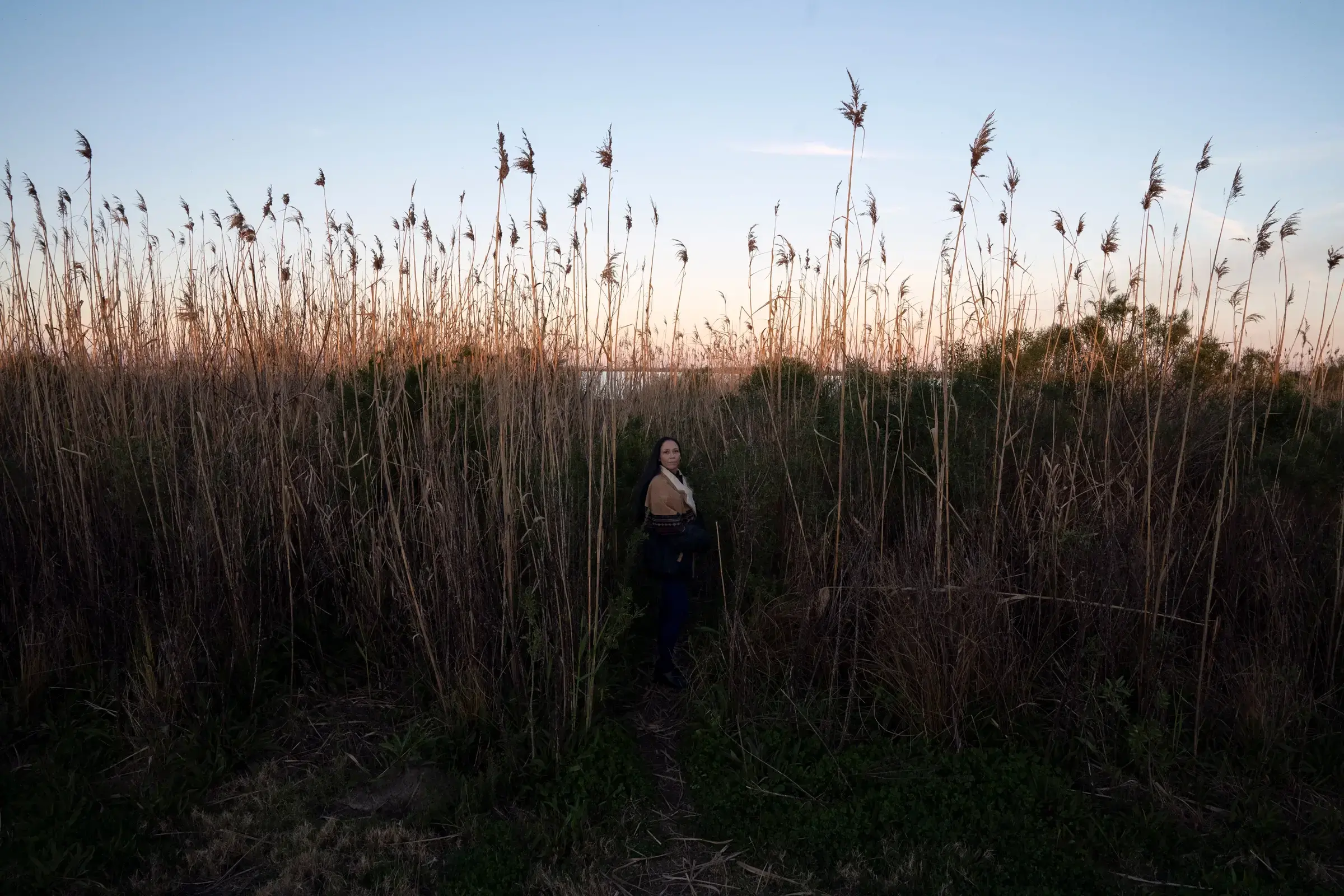
This isn’t a new conversation for Philippe and the other tribes here. This land has been carved away for centuries — but each new generation learns from the one before it, with each gaining more access to the rooms where decisions are made. Time is running out, but with new tribal leaders, there is renewed hope that the tides could turn.
LOUISIANA IS HOME to four federally acknowledged indigenous tribes, 11 state-recognized tribes, and many more indigenous communities that have not been recognized by the state or federal government but have been here as long as the delta has existed. Philippe’s tribe is part of the First People’s Conservation Council (FPCC) of Louisiana, formed in 2012. It’s a group of smaller, coastal Native American tribes in the state that identify ways their traditional ecological knowledge can be used to help mitigate the climate crisis. Individually, Louisiana’s indigenous communities have been ringing the alarm bells about coastal erosion for decades, but they hope that by joining together, their voices can be stronger.
Some may look at the uphill battle these tribes are facing and ask, “Why not move inland?” It’s a question they’re tired of answering. And it’s one that shows how Western culture doesn’t understand how integral their land is to the indigenous tribes’ identities. In Philippe’s tribe’s creation story, the first ancestor emerged from the water. Indian French, a language spoken by many of Louisiana’s indigenous communities, doesn’t even have a word for wilderness, because it’s not a separate entity to indigenous people; it’s deeply connected. Plus, from a practical perspective, many of the people living here on the bayou work on the water, as shrimpers, fishers, and oyster farmers, or on shipyards for oil-and-gas companies.
The ongoing resettlement of Isle de Jean Charles, the small island 80 miles southwest of New Orleans, which was the first federally funded effort to move an entire community because of climate change, sparked intense disagreements. The Isle de Jean Charles Biloxi-Chitimacha-Choctaw Tribe accused the government of botching the resettlement by not respecting their original intent to reunite with other tribe members displaced by previous natural disasters and instead funding the considerable resettlement only for those who were physically living on the island, which included people outside of their tribe. So now many of the tribes here along Louisiana’s coast are even more skeptical and distrustful of efforts to resettle them as a community.
Philippe was president of the FPCC until early February, when she passed the position onto Elder Chief Shirell Parfait-Dardar. Parfait-Dardar is a member of the Biloxi-Chitimacha-Choctaw of the Grand Caillou/Duloc band. She is 43 years old and has tattoos that peek out from her clothing, including a feather tattoo with “chief” in script on her neck.
Today, Parfait-Dardar and her husband, Dale, and four children live in Chauvin, a couple of hours from Philippe on four acres of land close to the bayou. Their home that originally sat on this property was destroyed in Hurricane Ida, so they bought their next-door neighbor’s house, carving out space for their family, chickens, ducks, and two goats, and then giving the extra land back to nature.
Coastal erosion and the increase in salt water has killed off a lot of the vegetation in the bayou communities, which includes many of the indigenous plants that tribes use for medicinal purposes. The story of this area’s slow destruction begins back in the 1700s, when European colonizers came to Louisiana and built levees along the river for flood control. In the next century, the Army Corps of Engineers built more and larger levees. With the river trapped and unable to flow through the sinking wetlands, land loss began. In the 1930s, oil-and-gas companies dug canals while searching for oil, building pipelines and transporting equipment through the freshwater marshes. This carved up the wetlands — if you were to fly over the coast, you’d see the straight lines the canals make in contrast to the winding natural streams — and funneled in salt water from the Gulf. Parfait-Dardar comes from a family of healers, but her tribe can no longer train the next generation because of the lack of medicinal plants, which means traditional knowledge is being lost.
Parfait-Dardar invites me to lunch in Dulac, the waterfront town where she grew up that is 55 percent indigenous. Hurricane Ida’s destruction is still visible; blue tarps cover damaged roofs. She talks about a lot of the same methods that go back generations that Philippe described on our ride through the bayou: canal backfilling, marsh restoration, living shorelines. While both women are vocal in their advocacy, Parfait-Dardar’s name is the one that more government officials in Louisiana are familiar with.
In 2018, Parfait-Dardar was named chairperson of the newly created Native American Commission, which was created to advise Gov. John Bel Edwards’ Office of Indian Affairs on the concerns of Native Americans in the state. Two years later she was asked to consult with the governor’s new climate task force, which aimed to reduce greenhouse-gas emissions statewide to net zero by 2050. She became the sole indigenous voice on the task force. Getting people to listen — whether they want to or not — is Parfait-Dardar’s specialty.
Parfait-Dardar was just 27 when her council of elders sent her to her first public hearing, where the 2007 coastal master plan was presented. “They were slick,” she says, thinking back to how the elders subtly guided her. “They sent me to meetings, and I got really upset when I learned all kinds of decisions were being made that were impacting us, and we certainly weren’t being included in the conversation.”
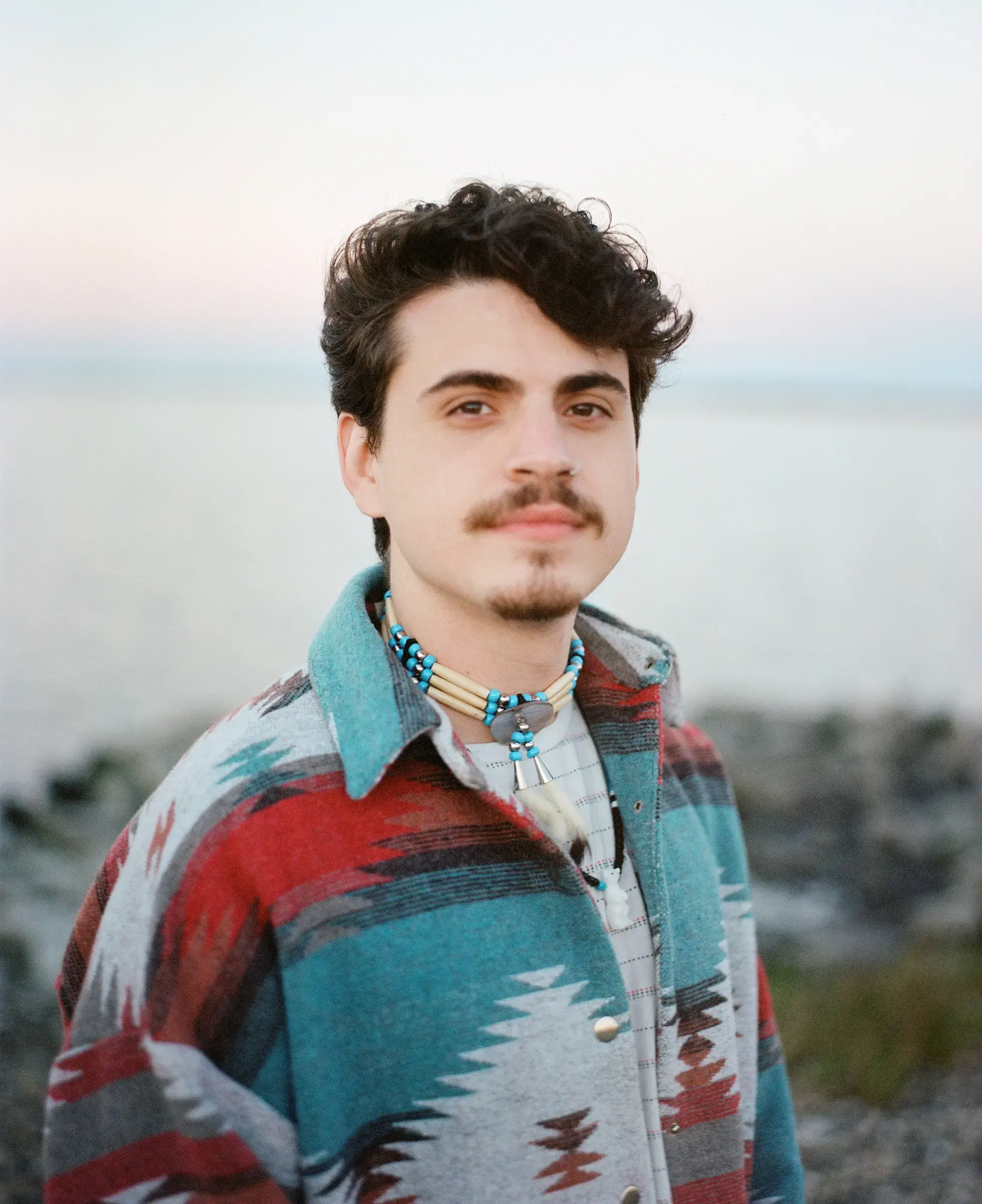
At first, the political jargon was confusing, but she kept going to meetings, bringing what she learned back to her community. After two years, Parfait-Dardar became her tribe’s first female chief. Her native name, Chula humma abi, means “killer red fox” in Choctaw. Her uncle blessed her with the name when she was 36, after she spent nearly a decade building up her network of allies and learning how to navigate for policy changes that included indigenous voices on a state and federal level.
Finally, with Parfait-Dardar, the coastal tribes have a seat at the table. After much advocacy led by Parfait-Dardar, Philippe, and the FPCC, their canal-backfilling initiative is finally listed in the state’s coastal master plan.
“Her tribal leadership is showing a way for a more sustainable, just future that is going to uplift and support everyone,” Julie Maldonado, an anthropologist who works with tribal communities on climate-change adaptation, says of Parfait-Dardar. “It’s a very big hill to climb when the first step is having to prove who you are and that you’re still there and exist.”
Having to prove their identity has been a fight indigenous people around the world have battled for centuries. Parfait-Dardar’s tribe is recognized by the state but not federally. Federal acknowledgment is vital — it’s the missing piece that would unlock some of the resources they need to protect their homes. (The federally acknowledged Chitimacha Tribe, for example, just received $5 million from the Biden administration to help with climate-change relocation.) It would allow the tribe to access additional disaster-relief funding as well as solidify its right to have more of a voice in decisions regarding land and sacred sites.
Disaster-justice expert Jerolleman puts it succinctly: “No other group is asked to prove their identity in the way that indigenous persons are. And no other group has their rights so closely tied to how they do so. It creates a nightmare scenario.”
Parfait-Dardar’s tribe first applied for federal acknowledgment in 1996, and the criteria since then continues to be revised and get more complicated. They hope to resubmit their documents again this summer.
“We would prefer just to exist as native peoples instead of still having to fight for our right to exist as who we were born to be,” says Parfait-Dardar. “[They] are overcomplicating things that are simple.”
IN LOUISIANA, THERE are two shrimping seasons: May for brown shrimp, August for white. On a recent Friday afternoon, I’m eating fried catfish and brown-shrimp jambalaya with Parfait-Dardar in a small restaurant perched on the edge of the bayou. We chat with Devon Parfait, the 25-year-old new Grand Caillou/Dulac chief she is mentoring.
Parfait-Dardar has known Parfait, her cousin’s son, would one day take over for her as chief since he was 12 years old and peppering her with questions about their tribe’s history. She encouraged him to get a college degree because she wanted him to have the right tools to navigate the new responsibilities that come with being a chief, like discussing policy with government officials. Plus, she says: “Education is the one thing they can’t really take from you once you have it. They’ve taken everything else, but they can’t take that.”
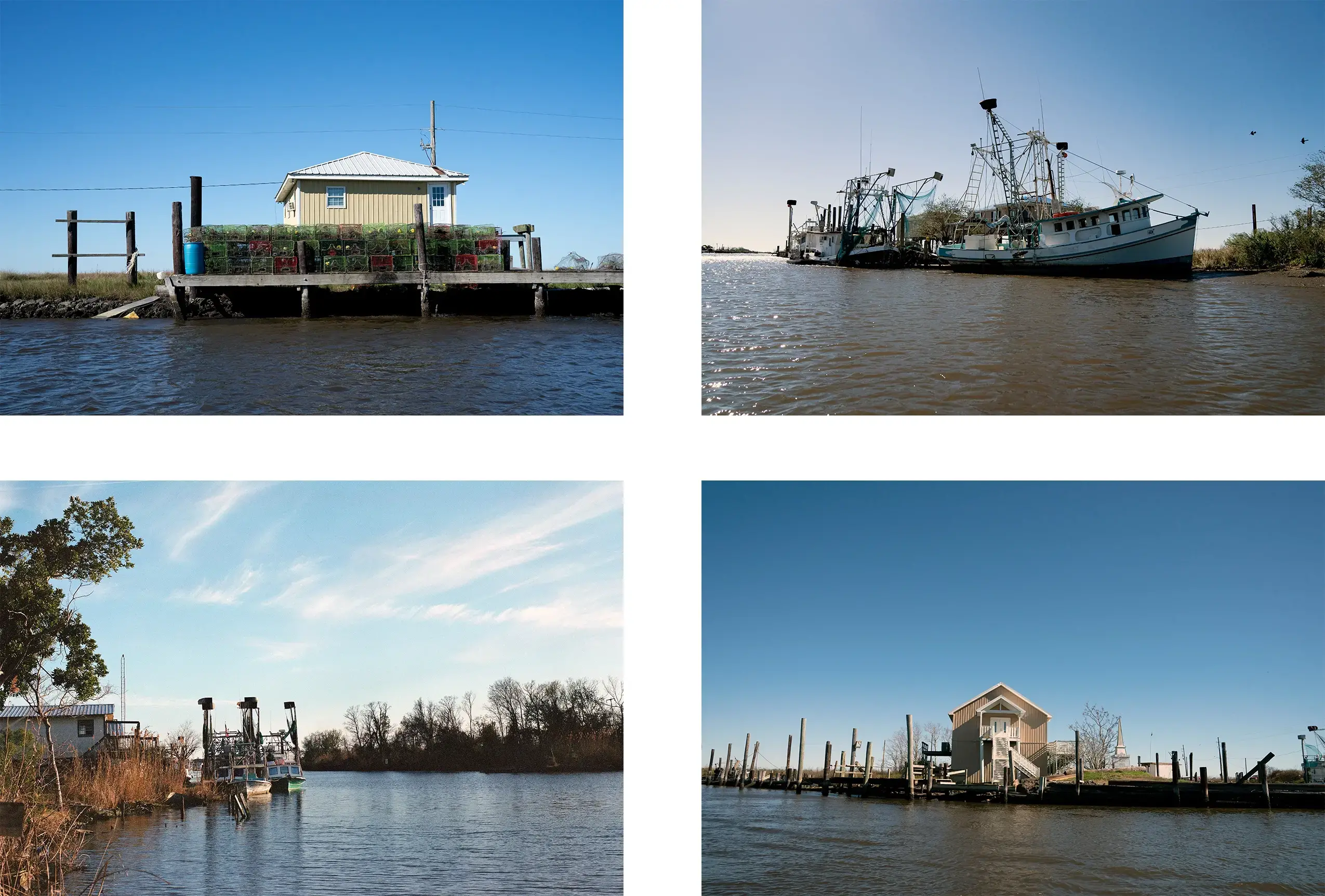
Today, Parfait is fresh out of Williams College, where he studied geoscience. At school, Parfait used satellite imagery to show that while Louisiana loses approximately 0.3 percent of land per year overall, his tribe loses 0.7 percent of their land per year. “By studying coastal land loss and developing better methodology, I was able to get those numbers and use them as an advocacy tool to show how we are disproportionately affected,” he says.
Parfait recently started working as a coastal-resilience analyst under the Environmental Defense Fund, an organization within the Restore the Mississippi River Delta Coalition. He will be able to advocate for his community on a professional level, and his current project models how cost-beneficial and successful canal backfilling can be.
We drive to where Parfait grew up, and he recounts his childhood on the bayou, which he calls the water highway, playing with puffer fish on his grandfather’s shrimp boat. As he points to the spot where his friend Tommy used to chase alligators, Parfait’s former neighbor, an indigenous elder named Pierre, comes over to say hi, and they reminisce about how the land has changed. Pierre says he remembers when he was paid to burn down wood pilings and debris after a storm, on a barrier island that is now underwater. He remembers thinking it was enough material that it could have been used to bulkhead miles of the bayou. (Bulkheading is a retaining wall meant to slow down coastal erosion and flooding.) Instead it was being wasted and turned into ash. If Pierre wanted to bulkhead his own property now, he’d need an impact statement and a permit, and it would be an expensive undertaking. Parfait-Dardar says an elder in their tribe calls this “white tape” — another way white people overcomplicate something that could be simple and beneficial.
DOWN THE DELTA, most houses in Grand Bayou Village are raised 14 feet off the ground; in 2021, Ida flooded the wetlands with about 10 feet of storm surge, but the wind caused the most damage. Philippe’s runaround boat and her brothers’ shrimp boat were damaged by Ida. The day she takes me through the bayou, she borrows her sister’s boat.
Philippe looks up as an osprey circles, then dives into the water and comes up with a fish in its talons. The osprey was considered endangered in the mid-20th century due to threats caused by pesticides. After the sale and use of DDT was banned, these birds of prey came back in a resurgence. The osprey lands on old wooden pilings, on which a dock used to sit before it was wrecked by Hurricane Katrina. Evidence of past hurricanes is intertwined with the beauty of the landscape.
After Katrina, Philippe says she felt pressured by the government to relocate, “But I kept hearing my grandfather’s voice, ‘Never give up your land.’ So I’m never giving up my land.”














